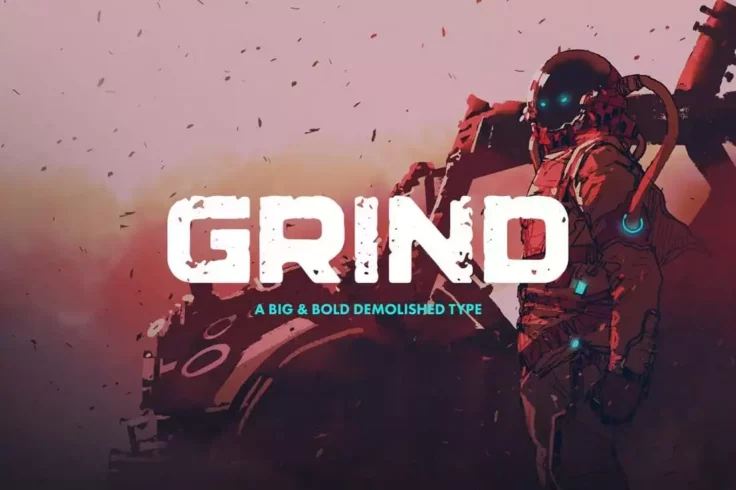20+ Best Block & Block Letter Fonts
Discover solid, geometric shapes and strong lines with our block and block letter fonts. These fonts ensure your text is highly readable and impactful, ideal for posters, signage, or anywhere you need bold, clear text.

Grind Bold Gaming Font
Grind is a bold gaming font that comes with a rough and textured letter design. This font can make your game titles and headings look more touch while...
FAQs About Block & Block Letter Fonts
What are Block & Block Letter Fonts?
Block and block letter fonts are typefaces that resemble traditional printed or hand-drawn lettering styles. These font types are generally characterized by their bold and bulky shapes, often with clear, straightforward lines. The term 'block letters' generally refer to the style of writing where the letters are drawn or printed in the shape of a block, without any curved lines or flourishes.
In typography, block fonts are often used for titles, headlines, or any other part of the text where emphasis is needed. They are popular in print media and graphic design, including logos, posters, and advertising materials. They're also known for their readability, making them suitable for both print and digital media.
What is the history of Block & Block Letter Fonts?
Block lettering has a rich history that dates back to ancient times. The ancient Romans were known to use a form of block lettering in their inscriptions, which later evolved into what we now know as the Roman alphabet. The Egyptians and Greeks used a similar style in their scripts as well. Block lettering became popular in medieval Europe, particularly during the Renaissance era, when artists and designers began to use it more frequently in their works.
In the modern era, block lettering has played a significant role in advertising and branding. It's often associated with strength and reliability, making it a preferred choice for many corporations and institutions. The typographical revolution in the 20th century saw the development of new block font families that continue to be widely used today.
What are some well-known Block & Block Letter Fonts?
Many block and block letter fonts have gained popularity over the years. Some of the well-known block fonts include Impact, Helvetica Bold, Monument, Futura Bold, and Gotham Bold. Each of these fonts has its own unique characteristics and uses, but they all share the common feature of being bold and eye-catching.
Impact, for example, is renowned for its condensed letters and tight letter spacing, making it ideal for headlines. On the other hand, Futura Bold is known for its geometric shapes and clean lines, which gives it a modern and stylish look. These are just a few examples of how varied and versatile block and block letter fonts can be.
How to choose the right Block & Block Letter Fonts?
Choosing the right block or block letter font depends on several factors, including the specific needs of your project, the tone you want to set, and the medium through which your design will be displayed. You also need to consider the font's legibility, especially in smaller sizes or on different kinds of screens if you're designing for digital media.
Also, consider the mood or message you want to convey with your design. Block fonts can create a strong, authoritative tone, making them suitable for corporate branding or advertising campaigns. On the other hand, some block letter fonts can lend a playful or casual vibe to your design. Understanding the impact of different fonts on your audience can help you make an informed choice.
How to use Block & Block Letter Fonts effectively?
Using block and block letter fonts effectively requires understanding their impact and appropriate applications. These fonts are bold and draw attention, which makes them excellent for headings, logos, banners, and other places where you need to make a strong impression. However, because they are so bold, they can also be overwhelming if used for lengthy text or in a small size.
Block letters are best used sparingly and in contrast with other typefaces for balance. Mixing them with more traditional fonts can create a dynamic and visually interesting design. Finally, always keep your audience and platform in mind – ensure that your chosen font is easily readable and visually appealing in your specific design context.